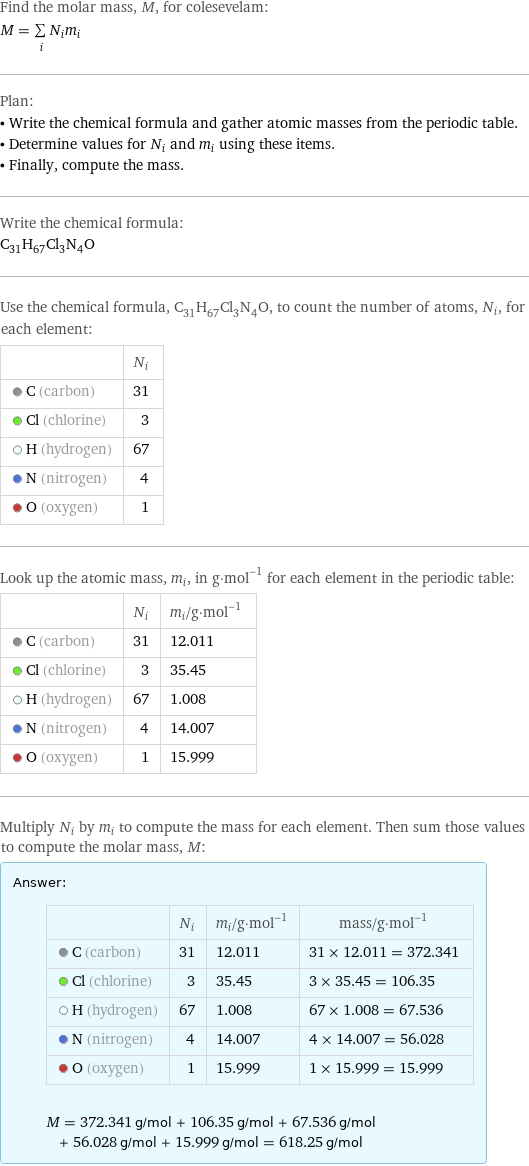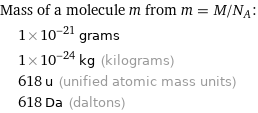Input interpretation

colesevelam | molar mass
Result

Find the molar mass, M, for colesevelam: M = sum _iN_im_i Plan: • Write the chemical formula and gather atomic masses from the periodic table. • Determine values for N_i and m_i using these items. • Finally, compute the mass. Write the chemical formula: C_31H_67Cl_3N_4O Use the chemical formula, C_31H_67Cl_3N_4O, to count the number of atoms, N_i, for each element: | N_i C (carbon) | 31 Cl (chlorine) | 3 H (hydrogen) | 67 N (nitrogen) | 4 O (oxygen) | 1 Look up the atomic mass, m_i, in g·mol^(-1) for each element in the periodic table: | N_i | m_i/g·mol^(-1) C (carbon) | 31 | 12.011 Cl (chlorine) | 3 | 35.45 H (hydrogen) | 67 | 1.008 N (nitrogen) | 4 | 14.007 O (oxygen) | 1 | 15.999 Multiply N_i by m_i to compute the mass for each element. Then sum those values to compute the molar mass, M: Answer: | | | N_i | m_i/g·mol^(-1) | mass/g·mol^(-1) C (carbon) | 31 | 12.011 | 31 × 12.011 = 372.341 Cl (chlorine) | 3 | 35.45 | 3 × 35.45 = 106.35 H (hydrogen) | 67 | 1.008 | 67 × 1.008 = 67.536 N (nitrogen) | 4 | 14.007 | 4 × 14.007 = 56.028 O (oxygen) | 1 | 15.999 | 1 × 15.999 = 15.999 M = 372.341 g/mol + 106.35 g/mol + 67.536 g/mol + 56.028 g/mol + 15.999 g/mol = 618.25 g/mol
Unit conversion

0.6183 kg/mol (kilograms per mole)
Comparisons

≈ 0.86 × molar mass of fullerene ( ≈ 721 g/mol )

≈ 3.2 × molar mass of caffeine ( ≈ 194 g/mol )

≈ 11 × molar mass of sodium chloride ( ≈ 58 g/mol )
Corresponding quantities

Mass of a molecule m from m = M/N_A: | 1×10^-21 grams | 1×10^-24 kg (kilograms) | 618 u (unified atomic mass units) | 618 Da (daltons)

Relative molecular mass M_r from M_r = M_u/M: | 618